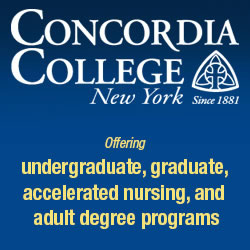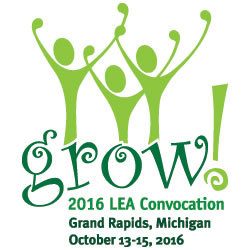 Lutheran Education:
Lutheran Education:
A Global Perspective
It was Martin Luther who first set the tone for global Lutheran education almost 500 years ago: “When schools flourish, things go well and the church is secure”1 and “I greatly fear that schools for higher learning are wide gates to hell if they do not diligently teach the Holy Scriptures and impress them on the young folk.”2 Luther’s passion for education and the theology behind his words propelled Christian education in a new direction and inspired church leaders to develop new strategies for outreach.
Even the most visionary of reformers and education leaders could not have anticipated the significant growth and expansion of Lutheran education in all parts of the world. As Christians are called to carry out the Great Commission (“Go therefore and make disciples of all nations, baptizing them in the name of the Father and of the Son and of the Holy Spirit” [Matthew 28:19]), it is only natural that teaching has been a basis for spreading the Word of God through the centuries. Factors such as travel opportunities, publication innovations (remember the Gutenberg Press?), and the vast array of technological innovations have made possible what could never be dreamed in previous centuries. But at the center of global Lutheran education is still the mission heart.
Following the Reformation in Europe, the growth of the Church took new forms as communities of believers spread into many parts of the world. Such travel was motivated both by the simple desire to carry God’s Word to other lands and by the need to escape religious conflict (and sometimes persecution) occurring as a result of changes in the church and in society. Missionaries took along with them their traditions, their languages, and their cultures. As they settled in new lands, their influence on the indigenous people was significant. One thing they all had in common was the desire to spread the Word of God to places and people who had not yet heard and to “make disciples of all nations.” Pastors led, and congregations were formed. In their earliest efforts, and on the basis of the teaching of Martin Luther, this instruction was also initiated in the home and developed through formal education in schools.
In each place, priority was placed on establishing schools for the children of the missionaries, but they also offered an education for the children of the people they were serving. Such a model established the beginning of today’s outreach and mission orientation.Educational Mission Foundations
Many stories have been told about the early days of mission work from Europe to other countries. Some major examples of such movements were the sending of missionaries through some 23 German mission societies in the early and middle part of the 19th century. After many years of struggle and search for identity in these Lutherans’ own homeland, numerous missionary efforts resulted in new locations of congregations and schools on several continents. During the early 1800s, German settlers found their way to locations such as South Africa, Australia, southern Brazil, Latin America, Palestine, India, and North America. In each place, priority was placed on establishing schools for the children of the missionaries, but they also offered an education for the children of the people they were serving. Such a model established the beginning of today’s outreach and mission orientation.
In many of the countries where early missionary activity took place and congregations grew, formal church organizations formed, and denominations were often the result of this coordinated effort. Such church bodies usually kept close ties to their founding church affiliates and other bodies who shared their doctrinal beliefs, resulting in many forms of fellowship; there were also divisions caused by disagreements among those bodies. But Christian education remained a priority at the local level.
As the church systems grew, so did the school population. In many cases—such as in Australia, the United States, Canada, Hong Kong, and Brazil, where the quantity of Lutheran schools blossomed over the years—systems were established to provide ongoing support for the educators, boards, and congregations engaged in operating the programs. School offices were formed at the national levels in many of the denominations and often at a district or regional level as well. Professional organizations and other supporting agencies were also formed in response to the demand for growth. In recent years, new initiatives for the development of such professional organizations have been seen in Asia, Africa, and Central America.
In places such as China, Papua New Guinea, Indonesia, and many parts of Africa, formal missionary work was the result of new outreach originating in the very countries that benefited from the original German and other European mission efforts of previous decades. Beginning in the early 1900s and growing significantly through the twentieth century, mission sites were established by denominations, mission organizations, and even individual congregations in countries throughout Africa, Central and South America, and Asia. Many of these later mission starts also resulted in the establishment of their own church bodies, and the relationship among the denominations grew. Schools were almost always associated with the growth of the Lutheran Church as it has developed in the last century. Christian education has remained at the center of outreach.
For the Church, the presence of Christian schools in predominantly non-Christian communities provides a rich opportunity for outreach and meaningful ministry, often in places where no other approach is allowed.Most schools connected in some way with the Lutheran Church around the world serve primarily those students who are residents of their own country. However, the past five decades have seen an increase in the development of international schools, which reach beyond the national students and serve expatriates who live in their midst. Three international schools in Hong Kong, Shanghai, and Hanoi are currently operated by The Lutheran Church—Missouri Synod. Highland Lutheran International School in Papua New Guinea and Buena Vista Concordia International School in China are other examples of international schools located along the Pacific Rim. It is likely that such growth will continue. Parents who find themselves in foreign countries want the same type of quality education for their children as if they were at home. The added value of a Christian context for their students is attractive. For the Church, the presence of Christian schools in predominantly non-Christian communities provides a rich opportunity for outreach and meaningful ministry, often in places where no other approach is allowed.
 Challenges and Questions
Challenges and Questions
Lutheran education has experienced its share of problems and changes over the centuries since Martin Luther challenged the conventional church. Schools have been the victims of theological and structural obstacles within the church itself: education has sometimes been diminished as a ministry priority, leadership has changed, and denominational differences have restricted growth.
However, most of the challenges experienced by Lutheran schools through the years have come from outside. Demographic decline in areas that once were Lutheran strongholds, economic problems that increasingly have global implications, and societal pressures from many angles are all responsible for changes to the kind of Lutheran education that our forefathers developed and nurtured. In some cases, this has caused school closings; in a disturbing number of new cases, these factors have been responsible for an erosion in what the Lutheran school can and should bring to its community.
Important questions about the future of Lutheran education have been raised in recent years, such as how to best fund Lutheran schools, how to ensure qualified and committed educators (in response to a significant reduction in the output of trained Lutheran college graduates), and what constitutes the best school for the community it serves. It is clear that people’s needs are changing, and their expectations of schools are higher than ever.
How can the Church provide the most relevant education opportunities for children of all ages, both those who are affiliated with the Church and those whom the Church can clearly reach in new ways? In a changing post-Christian world, how can the basic mission of the Church—commanded of us in Matthew 28—be best focused on the people and communities in which it is clearly embedded?
Opportunities and Joys
If Martin Luther were around today, he would probably have stated most of the things he said and wrote in exactly the same way. He would likely have been intrigued, however, with the myriad new opportunities that God has given the Church to take His saving Word into all the world. The years since Luther’s ministry in the 16th century have opened doors that he could not have imagined, but would have enjoyed seeing in action. With the current opportunities that God has provided in this world and a vision for new things to come, the Church and education communities might consider the following directions for the future of global Lutheran education:
- Continue to develop and coordinate the training programs and service opportunities at Lutheran higher education institutions.
- Activate new organizations, conferences, and professional development opportunities in countries around the world that have Lutheran schools and other Christian education programs. Build upon the global Lutheran education initiatives already undertaken by Lutheran Education Association (LEA), Lutheran Education Australia, and Asia Lutheran Education Association.
- Establish alliances of agencies and church organizations across denominational lines that focus on Christian education in the context of the Lutheran Church.
- Provide exposure to global Lutheran education experiences for university students, field educators, and retired educators through servant events and short-term and long-term opportunities.
- Facilitate the identification of and support for professional educators to serve in Lutheran education settings at the national and international levels.
- Publicize and support the work of mission organizations that specifically emphasize education as the basis for their ministry (e.g., Garuna Foundation and LeadaChild).
- Identify the countries that currently have schools as part of their Lutheran ministry outreach and include their educators in LEA’s Global Lutheran Educators Network.
- Bring together (both physically and virtually) leaders and educators from all parts of the world who have in common the vision for Lutheran education in their settings.
The charge of Martin Luther to stay rooted in Holy Scripture so that “when schools flourish, things go well and the church is secure” has remained at the heart of Lutheran education growth and development through the decades.New Direction for Mission and Ministry
Many church leaders, local congregations, missionaries, and leaders worldwide have observed that education may increasingly be the best opportunity for outreach, foundation for evangelism, and means of reaching the lost that Christians have for mission work today. In some cases, it is the only way of having a formal presence in a country. God has blessed the work of countless missionaries and all those who have supported them through the last five centuries. The charge of Martin Luther to stay rooted in Holy Scripture so that “when schools flourish, things go well and the church is secure” has remained at the heart of Lutheran education growth and development through the decades. Schools, educators, leaders, and supporting agencies have made it possible for people of all ages to hear the Word of God, practice it in their daily lives, and share it with others in many places throughout the world.
Today’s innovations and global interdependence have made it possible for each of us to become part of a worldwide Lutheran education mission in ways never before available. Getting involved personally in experiences, travel, and events is more possible than ever. Countless resources are available on the Internet, as well as many opportunities to be connected to the global Lutheran education network. More important, each person who understands the value of education as a foundational part of every person’s life and catches the vision for how the Church can use this God-given ministry can pray each day for all those who serve in so many countries and for the continuing growth of Lutheran education around the world.
Jonathan C. Laabs is the executive director of Lutheran Education Association.
ENDNOTES
1 LW 54:452.
2 Martin Luther, What Luther Says (St. Louis: Concordia, 1959), § 1327.
Reprinted from The Pedagogy of Faith: Essay on Lutheran Education, copyright © 2016 Concordia Publishing House. Used by permission. All rights reserved.
Unless otherwise indicated, Scripture quotations are from the ESV® Bible (The Holy Bible, English Standard Version®), copyright © 2001 by Crossway, a publishing ministry of Good News Publishers. Used by permission. All rights reserved.
Quotations marked LW are from Luther’s Works, American Edition: volumes 1–30 © 1955–76 and volumes 58–60, 67–69, 75–78 © 2009–15 Concordia Publishing House; volumes 31–54 © 1957–86 Augsburg Fortress.







